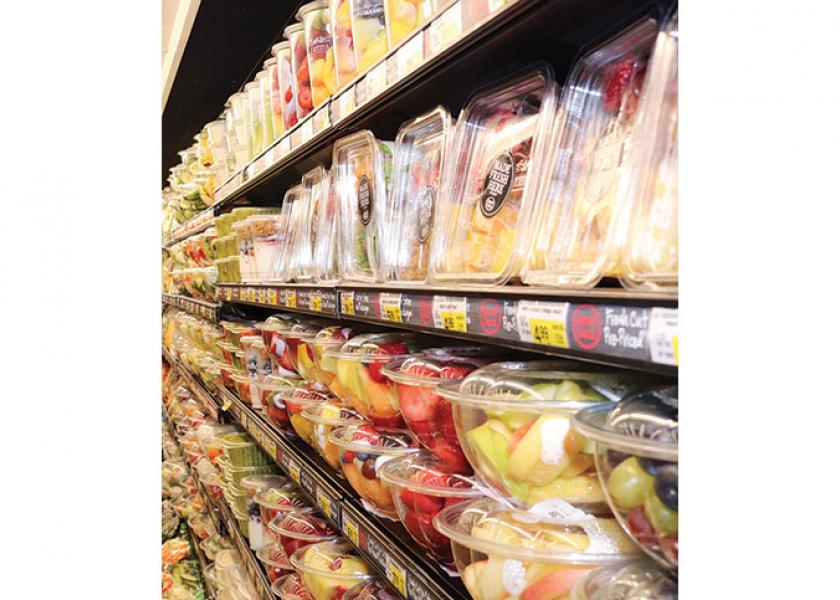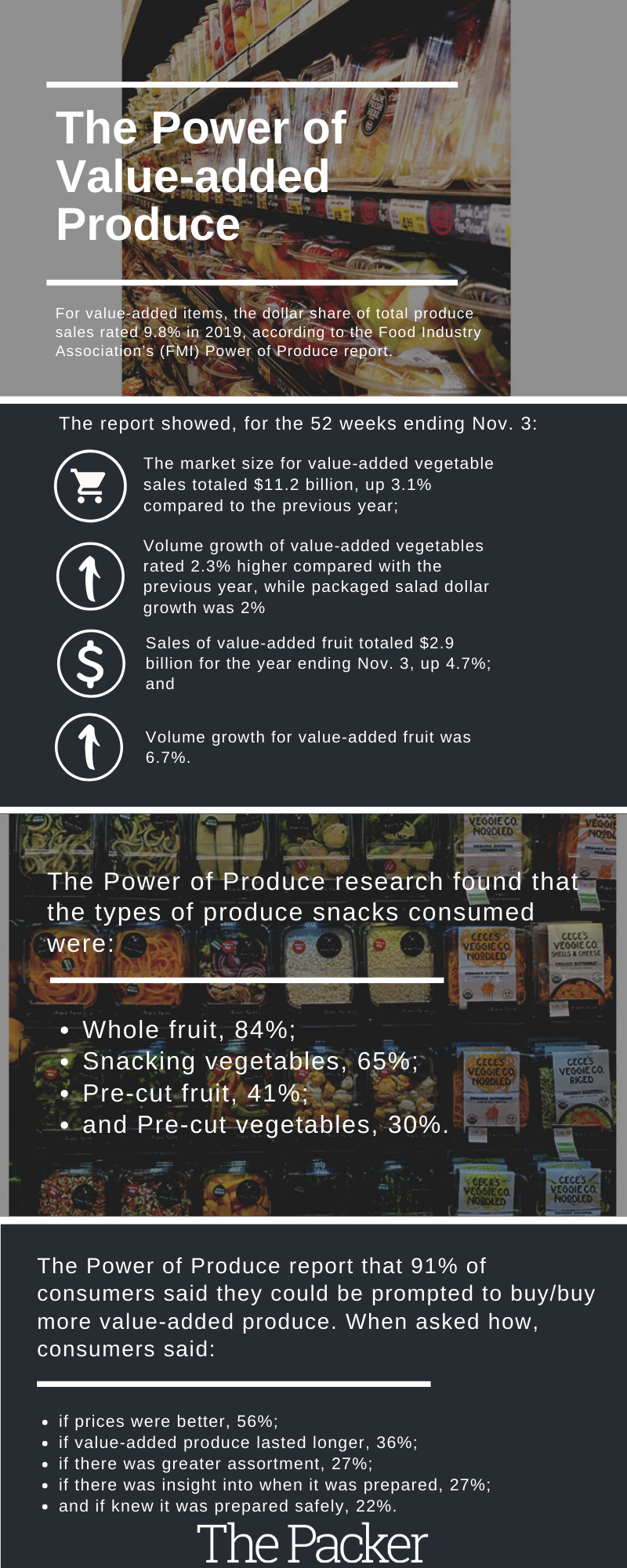Power of Produce shows growth in value-added

The power of value-added produce sales speaks for itself.
For value-added items, the dollar share of total produce sales rated 9.8% in 2019, according to the Food Industry Association’s (FMI) Power of Produce report.
The report showed, for the 52 weeks ending Nov. 3:
- The market size for value-added vegetable sales totaled $11.2 billion, up 3.1% compared to the previous year;
- Volume growth of value-added vegetables rated 2.3% higher compared with the previous year, while packaged salad dollar growth was 2%;
- Sales of value-added fruit totaled $2.9 billion for the year ending Nov. 3, up 4.7%; and
- Volume growth for value-added fruit was 6.7%.
The growth rate for value-added fresh produce sales easily exceeds the 2019 all-produce department growth rate of 1.2% for the 52 weeks ending Nov. 3.
Snacking occasions throughout the day leave the door wide open for expanded value-added sales, Anne-Marie Roerink, principal of 210 Analytics, said in the FMI’s Power of Produce presentation at the Southeast Produce Council’s Southern Exposure convention. Research indicates big value-added shoppers tend to skew young and wealthier.
The Power of Produce research found that the types of produce snacks consumed were:
- Whole fruit, 84%;
- Snacking vegetables, 65%;
- Pre-cut fruit, 41%; and
- Pre-cut vegetables, 30%.

Market potential
Consumers more often purchase value-added vegetables than value-added fruit.
The Power of Produce reported that 25% of consumers said that they buy value-added vegetables frequently, compared with 20% who say they buy value-added fruit frequently. Forty-two percent of consumers said they “sometimes” buy value-added vegetables, compared with 38% who said that about value-added fruit.
Only 8% of consumers said they “never” purchased value-added vegetables, compared with 13% who said they never buy value-added fruit.
“We’re seeing a little bit more engagement with the vegetable side than we do with the fruit side,” Roerink said, noting that provides value-added fruit an opportunity to grow.
“In terms of growth, we continue to see the same barriers and they’re very similar to that of organic, and it is price perception,” she said.
The Power of Produce report that 91% of consumers said they could be prompted to buy/buy more value-added produce. When asked how, consumers said:
- if prices were better, 56%;
- if value-added produce lasted longer, 36%;
- if there was greater assortment, 27%;
- if there was insight into when it was prepared, 27%; and
- if knew it was prepared safely, 22%.
“Value-add is definitely driving our business within produce, and so we continue to look at (the) assortment that our customer is looking for, the packaging that helps to present that product to her in the most sustainable way as we possibly can because quite often with a lot of these snacking, value-add type items, the sustainability of that packaging is a challenge for us,” Chris Dove, vice president of produce merchandising and pricing for Food Lion, said at the SEPC Power of Produce session.
“We create sections within produce that we merchandise a lot of our snacking, value-add items, we use signage to bring her to those sections, and then there are opportunities for tie-ins across the store,” Dove said.
“An example for us is we’ll offer healthy snacking alternatives as she checks out at the front end in a refrigerated cooler.”
Future growth
Andrew Schuster, director of produce and floral for Target, said at the SEPC session that Target looks at ways to make it easy and convenient for shoppers to find what they need.
Those methods include meal kits, tie-in merchandising of value-added produce with the deli department, and creating engagement opportunities for value-added produce in all types of store formats.
“We are making sure we are curating the right assortment for every consumers shopping with an occasion in mind.”
Future value-added growth could come from commodities with health benefits such as high antioxidant levels, said Reade Sievert, vice president of corporate produce for Associated Wholesale Grocers. Sweet potatoes, beets, and kohlrabi are a few of the commodities that might see value-added growth, he said.
“I think it’s endless (on) what’s out there, and we’re going to see a proliferation of it,” he said, noting the challenge will be effective merchandising.
Related content:
Finding quality, flavor in previewed products
Fresh Summit New Product Preview — More salads!
Boston-area produce professionals work smarter to survive and thrive







